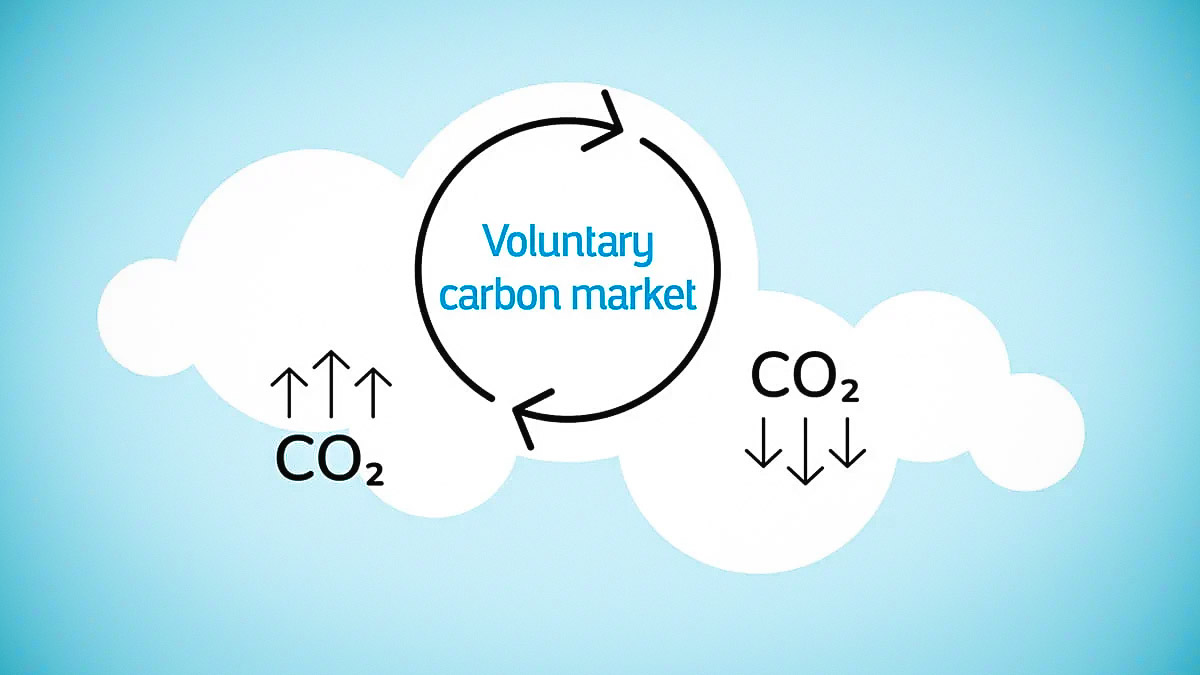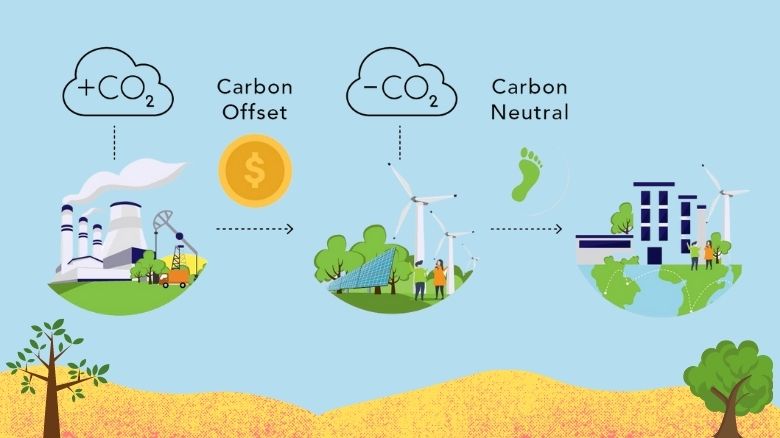
What will the voluntary carbon market be in 2030?
This growth is expected to continue, with the market projected to reach between $10 billion and $40 billion by 2030, according to a report by Boston Consulting Group. The report also highlights that the pace of purchases is still accelerating in 2022.
The voluntary carbon market is a market where companies and individuals can purchase carbon credits to offset their carbon emissions. These credits are created by projects that reduce or remove greenhouse gas emissions, such as renewable energy projects or reforestation projects. The market has been growing rapidly as companies and individuals seek to reduce their carbon footprint and take action on climate change.
In this article, we will explore what the voluntary carbon market will look like in 2030. We will examine the evolution of voluntary carbon markets, market dynamics and projections, regulatory framework and standards, market participants and customers, mechanics of voluntary carbon markets, benefits and criticisms, economic implications, environmental impact, innovations, and future outlook. We will also answer frequently asked questions about the voluntary carbon market.
Key Takeaways
- The voluntary carbon market is growing rapidly, with the market value projected to reach between $10 billion and $40 billion by 2030.
- The market is driven by companies and individuals seeking to reduce their carbon footprint and take action on climate change.
- The future of the voluntary carbon market will depend on a variety of factors, including regulatory frameworks and standards, market dynamics, and innovations.
Evolution of Voluntary Carbon Markets
Historical Overview
Carbon markets are market-based mechanisms that allow companies to buy and sell carbon credits in order to reduce their carbon emissions. They can be either mandatory or voluntary. A mandatory carbon market is one that is regulated by governments, while a voluntary carbon market is one that is not regulated by governments.
The voluntary carbon market (VCM) began in the early 2000s, and was created as a way for companies to offset their carbon emissions voluntarily. The VCM was established as a way for companies to offset their carbon emissions by purchasing carbon credits from projects that reduce or remove carbon emissions from the atmosphere.
Recent Developments
In recent years, the VCM has seen significant growth, with the demand for carbon credits increasing rapidly. According to a report by the Taskforce on Scaling Voluntary Carbon Markets, the demand for carbon credits could increase by a factor of 15 or more by 2030 and by a factor of up to 100 by 2050. This growth is due in part to the increasing awareness of the need to reduce carbon emissions and combat climate change.
One recent development in the VCM is the emergence of blockchain technology as a way to track and verify carbon credits. Blockchain technology allows for transparency and accountability in the VCM, which is important for ensuring that carbon credits are legitimate and that emissions reductions are accurately verified.
Another recent development in the VCM is the focus on removing carbon emissions from the atmosphere, rather than just reducing them. This shift in focus is due to the recognition that reducing emissions alone will not be enough to combat climate change. Instead, it is necessary to remove carbon emissions from the atmosphere in order to achieve net-zero emissions.
In conclusion, the VCM has evolved significantly since its inception in the early 2000s. The demand for carbon credits is expected to continue to grow in the coming years, and new technologies and approaches are emerging to make the VCM more efficient and effective.
Market Dynamics and Projections
Market Size Forecast
The voluntary carbon market is expected to grow significantly in the coming years. According to a report by the Taskforce on Scaling Voluntary Carbon Markets (TSVCM), sponsored by the Institute of International Finance (IIF) with knowledge support from McKinsey, demand for carbon credits could increase by a factor of 15 or more by 2030 and by a factor of up to 100 by 2050. Overall, the market for carbon credits could be worth upward of $50 billion by 2030. [1]
This growth is driven by companies’ increasing focus on sustainability and their desire to reduce their carbon footprint. As more companies commit to achieving net-zero emissions, demand for carbon credits is expected to rise. Additionally, the growth of the market is expected to be driven by the increasing number of countries and regions implementing carbon pricing policies, which will create a larger market for carbon credits.
Price Trends Analysis
The price of carbon credits is expected to rise in the coming years due to increased demand. According to a report by Boston Consulting Group (BCG), the price of carbon credits could increase from the current average of $3-5 per tonne to $15-25 per tonne by 2030. [2] However, there are concerns that the market may become oversupplied, which could lead to a drop in prices.
It is important to note that the price of carbon credits is influenced by a variety of factors, including supply and demand dynamics, regulatory policies, and the cost of emissions reduction projects. As such, it is difficult to predict the exact trajectory of prices in the coming years. However, it is clear that the market for carbon credits will be an important tool in the fight against climate change, and its growth is expected to continue in the coming years.
In summary, the voluntary carbon market is expected to grow significantly in the coming years, with demand for carbon credits set to increase by a factor of 15 or more by 2030. The price of carbon credits is also expected to rise, although there are concerns about oversupply in the market. The market for carbon credits will be an important tool in the fight against climate change, and its growth is expected to continue in the coming years.
Regulatory Framework and Standards
Current Regulations
The regulatory framework for voluntary carbon markets is still evolving and varies across jurisdictions. In the United States, for example, the Environmental Protection Agency (EPA) regulates carbon markets through the Clean Air Act, while in Europe, the European Union Emissions Trading System (EU ETS) is the primary regulatory framework for carbon markets. Other countries also have their own regulatory frameworks for carbon markets.
In addition to national regulations, there are also international standards and guidelines for voluntary carbon markets. The International Organization for Standardization (ISO) has developed standards for carbon offset projects, such as ISO 14064 and ISO 14067. The Verified Carbon Standard (VCS) is another international standard that provides guidance for the development and certification of carbon offset projects.
Gold Standard and Certification
The Gold Standard for the Global Goals is a certification standard for carbon offset projects that also contribute to sustainable development goals. The Gold Standard was established in 2003 by several non-governmental organizations, including the World Wildlife Fund (WWF) and the United Nations Development Programme (UNDP). Projects that are certified by the Gold Standard must meet rigorous criteria for environmental and social sustainability.
Certification by the Gold Standard can provide additional benefits to carbon offset projects, such as increased marketability and access to premium markets. Other certification schemes for carbon offset projects include the Climate, Community and Biodiversity Standards (CCBS) and the Social Carbon Standard (SCS).
In conclusion, the regulatory framework and standards for voluntary carbon markets are still evolving, but there are several international standards and certification schemes that provide guidance for the development and certification of carbon offset projects. The Gold Standard for the Global Goals is one such certification standard that provides rigorous criteria for environmental and social sustainability.
Market Participants and Customers
Key Players
The voluntary carbon market has a diverse range of participants including project developers, intermediaries, certification bodies, and buyers. Project developers are responsible for identifying, developing, and implementing carbon reduction or removal projects, while intermediaries facilitate the transaction between project developers and buyers. Certification bodies provide independent verification of the carbon credits generated by the projects. Buyers include corporations, governments, and individuals who purchase carbon credits to offset their carbon footprint. Some of the key players in the voluntary carbon market include Carbon Credit Capital, ClimateCare, South Pole, and Verra.
Customer Segmentation
The customers of the voluntary carbon market are diverse and include corporations, governments, and individuals. Corporations are the largest customers, accounting for approximately 75% of the demand for carbon credits. They purchase carbon credits to offset their carbon footprint and meet their sustainability targets. Governments also purchase carbon credits to offset their emissions, while individuals purchase carbon credits to offset their personal carbon footprint. The voluntary carbon market has seen significant growth in recent years, driven by increased demand from corporations and the growing trend towards sustainability.
The largest carbon market in the world is the European Union Emissions Trading System (EU ETS), which covers 31 countries and is the largest cap-and-trade system in the world. However, the EU ETS is a mandatory carbon market, and the voluntary carbon market operates separately from it. The voluntary carbon market is a global market, with projects located in countries across the world. The demand for carbon credits is expected to increase significantly in the coming years, driven by the growing awareness of climate change and the need for action to mitigate its effects.
Mechanics of Voluntary Carbon Markets
 How It Works
How It Works
Voluntary carbon markets are market-based mechanisms that allow individuals and organizations to offset their carbon emissions by purchasing carbon credits or offsets. These credits represent a reduction of one ton of greenhouse gas emissions. The market operates on the principle that reducing emissions in one place can offset emissions in another place.
The market is decentralized and fragmented, with many different types of buyers and sellers. Participants can include corporations, governments, non-governmental organizations, and individuals. The market can be accessed through brokers, exchanges, and online platforms.
Carbon Credits and Offsets
Carbon credits and offsets are the key elements of voluntary carbon markets. A carbon credit represents a reduction of one ton of greenhouse gas emissions. The credit is created when a project reduces emissions below a predetermined baseline. The project can be in any sector, such as renewable energy, energy efficiency, or forestry.
Offsets are similar to carbon credits, but they are created by projects that remove carbon from the atmosphere, such as reforestation or afforestation projects. Offsets can also be created by projects that reduce emissions from non-CO2 greenhouse gases, such as methane or nitrous oxide.
The number of credits or offsets needed to offset a specific amount of emissions depends on the type and location of the project. For example, it takes approximately 10 trees to offset one ton of CO2 emissions.
In 2030, voluntary carbon markets are expected to be more mature and transparent. The market is expected to grow significantly due to increased demand from corporations and individuals who are looking to reduce their carbon footprint. The market is also expected to become more standardized, with common rules and guidelines for project development and verification.



Leave a Reply